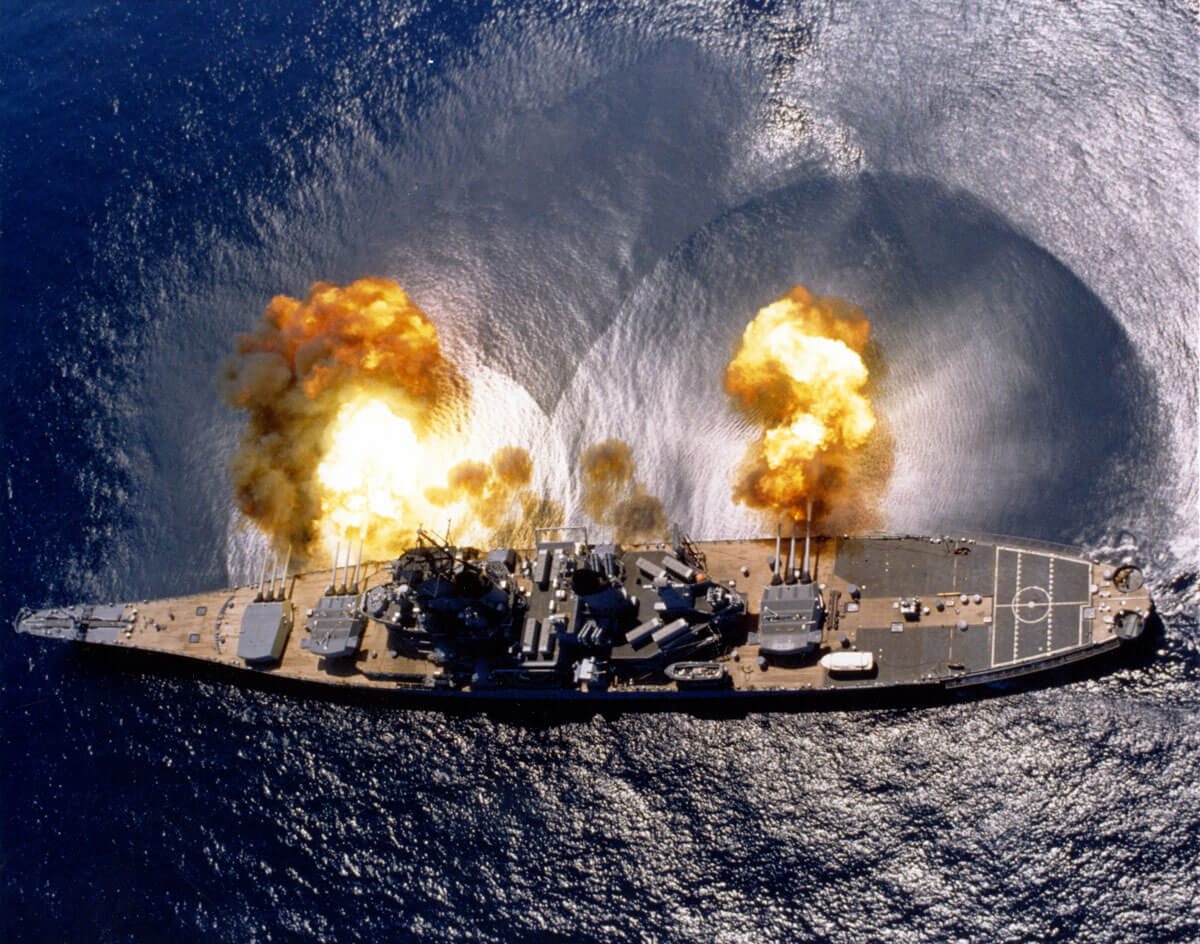Iowa Class Battleships Asbestos Exposure

Hull Number: BB-61 – BB-66
Type: Battleships
Class: Iowa
Built: New York and Philadelphia
Iowa Class battleships were long-serving U.S. ships involved in several major 20th century conflicts. They had the task of prompt and sustained combat at sea in order to protect national interests. Iowa Class ships were the last battleships built by the U.S. Navy.
These were the Navy’s first battleships with a design not encumbered by treaty limitations. They were fast battleships meant to protect U.S. aircraft carriers from Japanese “big gun” ships and to serve as fast wings for battle lines. This class of ships was the Navy’s most successful design with the longest service of any battleships.
Ships in the Iowa battleship class include:
- Iowa (BB-61): Completed in early 1943, this ship served for the duration of the Pacific theater conflict, screening carrier task forces from surface and air threats, conducting occasional shore bombardment, hauling into battle when a Japanese fleet appeared, and providing tactical commanders with a flagship.
- New Jersey (BB-62): The New Jersey was also completed in the first part of 1943 and performed the same functions as the Iowa for the duration of the war.
- Missouri (BB-63): Construction of the Missouri and the Wisconsin was slightly delayed by other priorities of wartime. These ships went into action during the last year of World War II. The formal end of the conflict took place of the decks of the Missouri.
- Wisconsin (BB-64): The Wisconsin served in the Pacific during the same time period as the Missouri.
- Illinois (BB-65): Construction of the Illinois and the Kentucky was stopped shortly after the war ended. The Illinois’ keel was laid in January 1945 in the Philadelphia Navy Yard. It was 22% complete when the cancellation order came in August 1945. The ship’s hull was scrapped in 1958.
- Kentucky (BB-66): The Kentucky was built in Portsmouth, Virginia at the Norfolk Navy Yard. The ship’s keel was laid in March 1942, but in June construction was suspended. It resumed in 1944, only to be suspended again in February 1947. Although the ship was only completed up to the second deck, it was launched to clear the dry dock for another ship in need of repairs. The Kentucky’s bow was used to repair another ship in 1956 and the remainder was sold for scrap in 1958. The engines are still running, however, powering two fast combat support ships.
Iowa Class Specs
Iowa Class battleships were designed to fill a need for the U.S. Navy during World War II. They had to be fast enough to provide protection for the new and faster Essex Class carriers and still provide the requisite firepower to combat Japanese vessels. Specifications include:
- Builders: New York Navy Yard (BB-61, 63); Philadelphia Navy Yard (BB-62, 64)
- Compliment: 1,515 ship’s company; 65 officers; 1,450 enlisted; 58 Marines
- Displacement: 45,231-57,271 tons
- Length: 888 feet (overall length); 860 feet (waterline length)
- Beam: 109 feet (extreme beam); 108 feet (waterline beam)
- Draft: 38 feet (maximum navigational draft); 37 feet (draft limit)
- Power Plant: 8 boilers, 4 turbines, 4 shafts, 212,000 shaft horsepower
- Maximum Speed: 35 knots
- Armament: 32 Tomahawk ASM/LAM, 8 armored box launchers; 16 Harpoon ASM, 4 quad cell launchers; 9 Mk 7 16-inch/50 caliber guns; 12 Mk 28 5-inch / 38 caliber guns; 4 Mk 15 20mm Phalanx CIWS
- Combat Systems: SPS-49 Air Search Radar; SPS-67 Surface Search Radar; 4 Mk 37 gun fire control; 2 Mk 38 gun direction; 1 Mk 40 gun director; 1 SPQ-9 BB-61
Sources:
- Global Security: BB-61 Iowa Class
- Military Factory: USS Iowa (BB-61) Battleship (1943)
- FAS Military Analysis Network: BB-61 Iowa-Class
